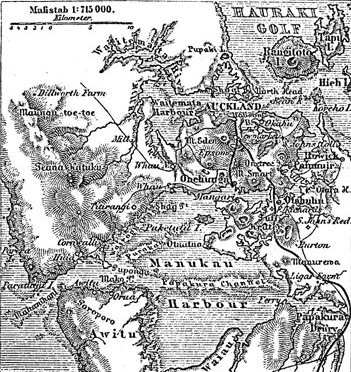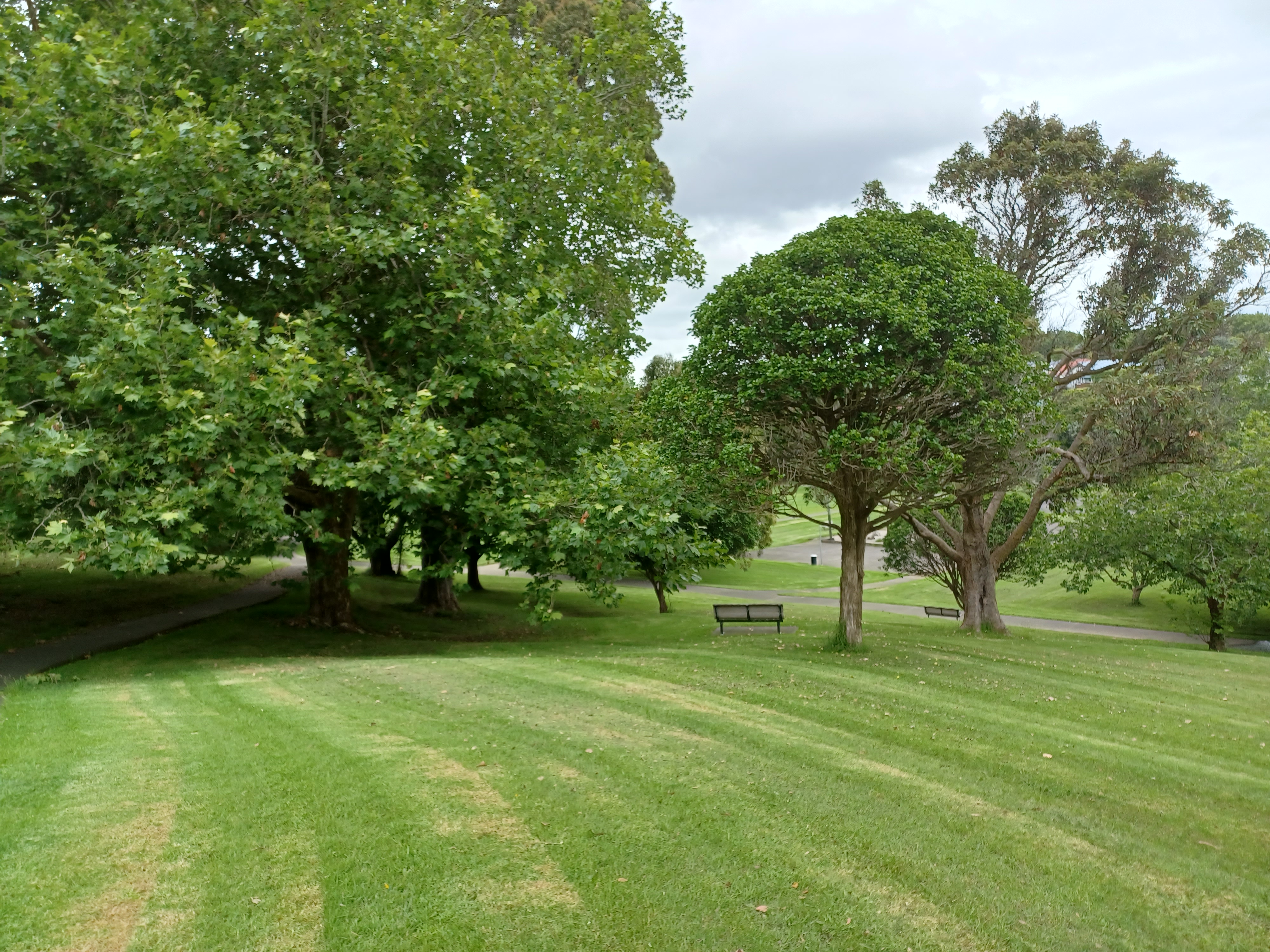|
Culture Of Auckland
The culture of Auckland encompasses the city's artistic, culinary, literary, musical, political and social elements, and is well-known throughout the world. As New Zealand's largest city and one of the most important in the Southern Hemisphere, Auckland has a rich and dynamic cultural life and a lengthy, multicultural history. Auckland's genesis as New Zealand's cultural heart began with the large-scale settlement of its fertile land by Ngāti Whātua and various Tainui hapū, before greater settlement by further iwi such as Ngāpuhi and the arrival of Pākehā. Auckland's culture derives further from its multicultural demographics, thanks to large-scale Indian, Colombian, Venezuelan, Arab, Cook Islands Māori, Tongan, Tokelauan, British, Irish, Fijian, Chinese, Niuean, Samoan, Filipino, Khmer, and intertribal Māori immigration, among others. From there, these communities established ethnic strongholds (e.g. historically Samoans in Grey Lynn and Ponsonby, Chinese in Howic ... [...More Info...] [...Related Items...] OR: [Wikipedia] [Google] [Baidu] |
Auckland Sky Tower (31474437543)
The Sky Tower is a telecommunications and observation tower in Auckland, New Zealand. Located at the corner of Victoria and Federal Streets within the city's CBD, it is tall, as measured from ground level to the top of the mast,Sky Tower Official page ''-'' making it the second tallest freestanding structure in the Southern Hemisphere, surpassed by Luminary Tower in Jakarta, Indonesia. and the 28th tallest tower in the world. Since its completion in 1997 the Sky Tower has become an iconic landmark in Auckland's skyline, due to its height and design. The tower is part of the |
British People
British people or Britons, also known colloquially as Brits, are the citizens of the United Kingdom of Great Britain and Northern Ireland, the British Overseas Territories, and the Crown dependencies.: British nationality law governs modern British citizenship and nationality, which can be acquired, for instance, by descent from British nationals. When used in a historical context, "British" or "Britons" can refer to the Ancient Britons, the indigenous inhabitants of Great Britain and Brittany, whose surviving members are the modern Welsh people, Cornish people, and Bretons. It also refers to citizens of the former British Empire, who settled in the country prior to 1973, and hold neither UK citizenship nor nationality. Though early assertions of being British date from the Late Middle Ages, the Union of the Crowns in 1603 and the creation of the Kingdom of Great Britain in 1707 triggered a sense of British national identity.. The notion of Britishness and a s ... [...More Info...] [...Related Items...] OR: [Wikipedia] [Google] [Baidu] |
Papatoetoe
Papatoetoe is a suburb in Auckland, New Zealand. It is the largest suburb in Auckland by population and is located to the northwest of Manukau Central, and 18 kilometres southeast of Auckland CBD. Papatoetoe has the unofficial title of Auckland's Little India, with 40 percent of the suburb's population being of Indian ethnicity according to the 2018 census. Papatoetoe is a Māori name, which can be loosely translated as 'undulating area where the toetoe is the predominant feature',Papatoetoe Community Board Meeting, 28 June 2010 (from the 2006 Census Profile, . Accessed 2 ... [...More Info...] [...Related Items...] OR: [Wikipedia] [Google] [Baidu] |
Howick, New Zealand
Howick is an eastern suburb of Auckland, New Zealand, forming part of what is sometimes called East Auckland. Modern Howick draws much of its character from the succeeding waves of Asian settlement that it has experienced since New Zealand’s immigration reforms of the 1980s, with a strong Chinese New Zealander presence in the suburb’s business and education sectors. Demographics Howick covers and had an estimated population of as of with a population density of people per km2. Howick had a population of 11,067 at the 2018 New Zealand census, an increase of 555 people (5.3%) since the 2013 census, and an increase of 1,269 people (13.0%) since the 2006 census. There were 3,822 households, comprising 5,325 males and 5,739 females, giving a sex ratio of 0.93 males per female, with 2,199 people (19.9%) aged under 15 years, 2,058 (18.6%) aged 15 to 29, 5,184 (46.8%) aged 30 to 64, and 1,626 (14.7%) aged 65 or older. Ethnicities were 67.6% European/Pākehā, 6.2% Māori, ... [...More Info...] [...Related Items...] OR: [Wikipedia] [Google] [Baidu] |
Grey Lynn
Grey Lynn is an inner suburb of Auckland, New Zealand, located to the west of the city centre. Originally a separate borough, Grey Lynn amalgamated with Auckland City in 1914. Grey Lynn is centred on Grey Lynn Park, which was not part of the original subdivision of 1883, since the land was too steep and too wet for house construction. In 1914 the land was drained and levelled for playing fields. The park is home to the annual Grey Lynn Park Festival, which attracts around 100,000 visitors on the third Saturday in November. The character of the area is often seen as "arty", and one of being a "traditional home to free-thinkers and anti-establishment types". Demographics Grey Lynn covers and had an estimated population of as of with a population density of people per km2. Grey Lynn had a population of 11,733 at the 2018 New Zealand census, an increase of 891 people (8.2%) since the 2013 census, and an increase of 1,491 people (14.6%) since the 2006 census. There were 4, ... [...More Info...] [...Related Items...] OR: [Wikipedia] [Google] [Baidu] |
Māori People
The Māori (, ) are the indigenous Polynesian people of mainland New Zealand (). Māori originated with settlers from East Polynesia, who arrived in New Zealand in several waves of canoe voyages between roughly 1320 and 1350. Over several centuries in isolation, these settlers developed their own distinctive culture, whose language, mythology, crafts, and performing arts evolved independently from those of other eastern Polynesian cultures. Some early Māori moved to the Chatham Islands, where their descendants became New Zealand's other indigenous Polynesian ethnic group, the Moriori. Initial contact between Māori and Europeans, starting in the 18th century, ranged from beneficial trade to lethal violence; Māori actively adopted many technologies from the newcomers. With the signing of the Treaty of Waitangi in 1840, the two cultures coexisted for a generation. Rising tensions over disputed land sales led to conflict in the 1860s, and massive land confiscations, to ... [...More Info...] [...Related Items...] OR: [Wikipedia] [Google] [Baidu] |
Khmer People
The Khmer people ( km, ជនជាតិខ្មែរ, ) are a Southeast Asian ethnic group native to Cambodia. They comprise over 90% of Cambodia's population of 17 million.Cambodia CIA World FactBook. They speak the , which is part of the larger Austroasiatic-language family found in parts of (including , [...More Info...] [...Related Items...] OR: [Wikipedia] [Google] [Baidu] |
Filipinos
Filipinos ( tl, Mga Pilipino) are the people who are citizens of or native to the Philippines. The majority of Filipinos today come from various Austronesian ethnolinguistic groups, all typically speaking either Filipino, English and/or other Philippine languages. Currently, there are more than 185 ethnolinguistic groups in the Philippines; each with its own language, identity, culture and history. Names The name ''Filipino'', as a demonym, was derived from the term ''Las Islas Filipinas'' ("the Philippine Islands"), the name given to the archipelago in 1543 by the Spanish explorer and Dominican priest Ruy López de Villalobos, in honor of Philip II of Spain (Spanish: ''Felipe II''). During the Spanish colonial period, natives of the Philippine islands were usually known by the generic terms ''indio'' (" Indian") or ''indigenta'' ("indigents"). However, during the early Spanish colonial period the term ''Filipinos'' or ''Philipinos'' was sometimes used by Spanish wri ... [...More Info...] [...Related Items...] OR: [Wikipedia] [Google] [Baidu] |
Samoan New Zealanders
Samoan New Zealanders are Samoan immigrants in New Zealand, their descendants, and New Zealanders of Samoan ethnic descent. They constitute one of New Zealand's most sizeable ethnic minorities. In the 2018 census, 182,721 New Zealanders identified themselves as being of Samoan ethnicity with 55,512 stating that they were born in Samoa, and 861 stating that they were born in American Samoa. History Overview The country of Samoa (distinct from American Samoa) has a unique historical relationship with New Zealand, having been administered by New Zealand from 1914 to 1962. Notable levels of Samoan migration to New Zealand began in the 1950s. In the 1970s, Samoan illegal immigrants were the targets of notorious " dawn raids" by the police, which led to accusations of ethnic bias in tackling illicit immigration. That same decade, some Samoan New Zealanders joined the newborn Polynesian Panthers, an organisation dedicated to supporting Pacific Islander New Zealanders, for example by ... [...More Info...] [...Related Items...] OR: [Wikipedia] [Google] [Baidu] |
Niuean Language
Niuean (; ) is a Polynesian language, belonging to the Malayo-Polynesian subgroup of the Austronesian languages. It is most closely related to Tongan and slightly more distantly to other Polynesian languages such as Māori, Samoan, and Hawaiian. Together, Tongan and Niuean form the Tongic subgroup of the Polynesian languages. Niuean also has a number of influences from Samoan and Eastern Polynesian languages. Speakers Niuean was spoken by 1600 people on Niue Island (97.4% of the inhabitants) in 1991, as well as by speakers in the Cook Islands, New Zealand, and Tonga, for a total of around 8,000 speakers. There are thus more speakers of Niuean outside the island itself than on the island. Most inhabitants of Niue are bilingual in English. In the early 1990s 70% of the speakers of Niuean lived in New Zealand.Moseley, Christopher and R. E. Asher, ed. ''Atlas Of The World's Languages'' (New York: Routelage, 1994) p. 100 Dialects Niuean consists of two main dialects, t ... [...More Info...] [...Related Items...] OR: [Wikipedia] [Google] [Baidu] |
Chinese New Zealanders
Chinese New Zealanders ( mi, Tāngata Hainamana o Aotearoa; ) or Sino-New Zealanders are New Zealanders of Chinese ancestry. The largest subset of Asian New Zealanders, many of the Chinese immigrants came from Mainland China, Hong Kong, Taiwan, or other countries that have large populations of Chinese diaspora. Today's Chinese New Zealand group is composed of diasporic communities from Indonesia, Malaysia, Cambodia, Vietnam and Singapore. As of 2018, Chinese New Zealanders account for 4.9% of the population of New Zealand, and are the largest Asian ethnic group in New Zealand, accounting for 36.3% of Asian New Zealanders. In the 1860s goldrush immigrants from Guangdong arrived. Due to this historical influx, there is still a distinct Chinese community in Dunedin, whose mayor Peter Chin is of Chinese descent. However, most Chinese New Zealanders live in the North Island, and are of more recent migrant heritage. Chinese people historically faced severe discrimination in New Zeala ... [...More Info...] [...Related Items...] OR: [Wikipedia] [Google] [Baidu] |
Fijians
Fijians ( fj, iTaukei, lit=Owners (of the land)) are a nation and ethnic group native to Fiji, who speak Fijian and share a common history and culture. Fijians, or ''iTaukei'', are the major indigenous people of the Fiji Islands, and live in an area informally called Melanesia. Indigenous Fijians are believed to have arrived in Fiji from western Melanesia approximately 3,500 years ago, though the exact origins of the Fijian people are unknown. Later they would move onward to other surrounding islands, including Rotuma, as well as blending with other (Polynesian) settlers on Tonga and Samoa. They are indigenous to all parts of Fiji except the island of Rotuma. The original settlers are now called "Lapita people" after a distinctive pottery produced locally. Lapita pottery was found in the area from 800 BCE onward. As of 2005, indigenous Fijians constituted slightly more than half of the total Fijian population. Indigenous Fijians are predominantly of Melanesian extraction, ... [...More Info...] [...Related Items...] OR: [Wikipedia] [Google] [Baidu] |
.jpg)




.jpg)
.jpg)
